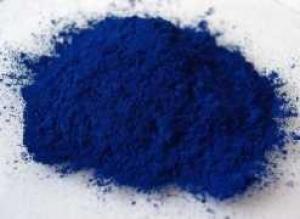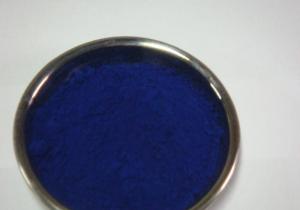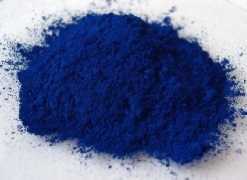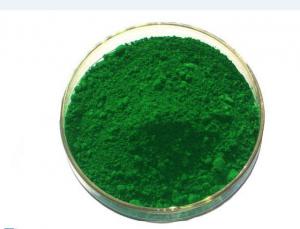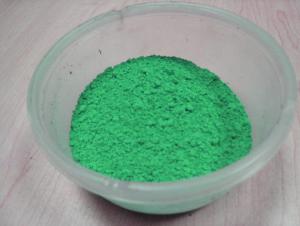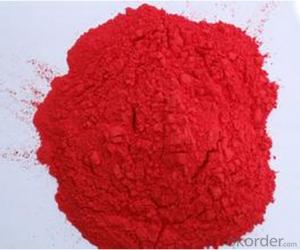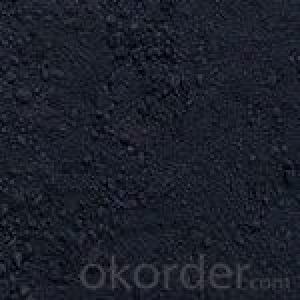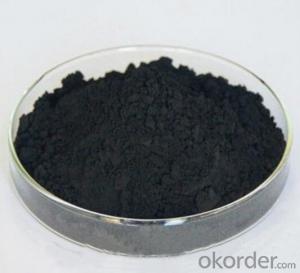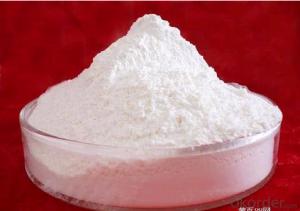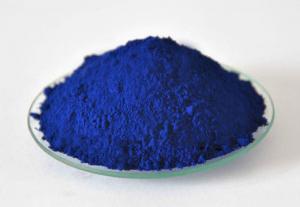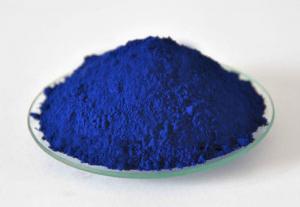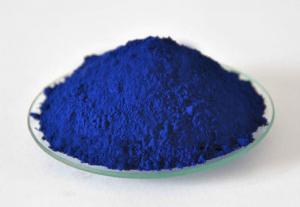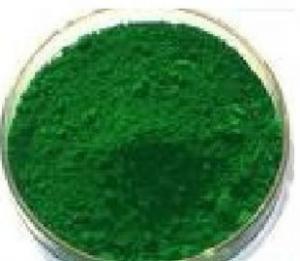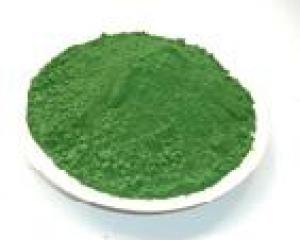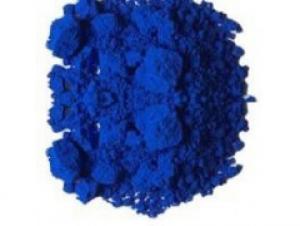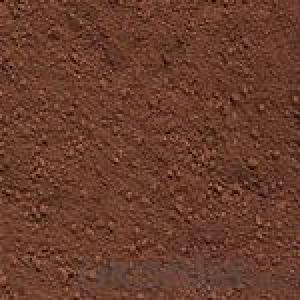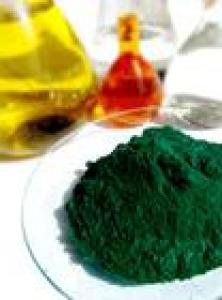Pigment Blue 15:1 For Coating
- Loading Port:
- Qingdao Port
- Payment Terms:
- TT or LC
- Min Order Qty:
- 1 Metric Ton m.t.
- Supply Capability:
- 7,500MT/Year m.t./month
OKorder Service Pledge
OKorder Financial Service
You Might Also Like
Product Details of Phthalocyanine Blue L6905F:
Production Details of Phthalocyanine Blue | |||
Chemical Structure | CuPc α | ||
Color Index No. | PB 15:0 | ||
Application | Ink | ||
Physical Form | powder | ||
Test Items | Index | Test Method | |
Relative Tinting Strength | 100 +_5% | DIN55986 | |
ΔE,ΔL,Δa,Δb | ≤1,+1,+1,+1 | ||
PH | 5.8~8 | DIN ISO 787-9 | |
Density 20℃ g/cm3 | 1.6 | DIN ISO 787-10 | |
BET m2/g | 66 | DIN 66131 | |
Oil absorption g/100g | 35~45 | DIN ISO 787-5 | |
105℃ Volatile Matter | ≤1.0% | DIN ISO 787-2 | |
Water Solubles | ≤1.5% | DIN ISO 787-13 | |
Residue on Sieve 100 mesh | ≤5% | DIN 53195 | |
Conductivity us/cm | ≤300 | DIN ISO 787-14 | |
Solvent Resistance | Index | Test Method | |
Water | 5 | DIN ISO 105-A03 | |
White Spirit | 5 | DIN ISO 105-A03 | |
Tolerance | Index | Test Method | |
Light Fastness | 8 | DIN ISO 105-A03 | |
Weather Resistance | 5 | DIN ISO 105-A03 | |
Acid Resistance | 5 | DIN ISO 105-A03 | |
Alkali Resistance | 5 | DIN ISO 105-A03 | |
Packing Details Of Phthalocyanine Blue L6905F :
25kg/ kraft or PP bag , or as your requirements .
Application Of Phthalocyanine Blue L6905F :
1) Printing ink
2) Paint
3) Plastic
4) Rubber
5) Pharmaceuticals
6) Printing colors
7) Highly dispersible
8) High density pigment used for addition of coloration
9) Limited anti-dissolvent and anti-flocculability
10) High temperature resistance and sunshine resistance
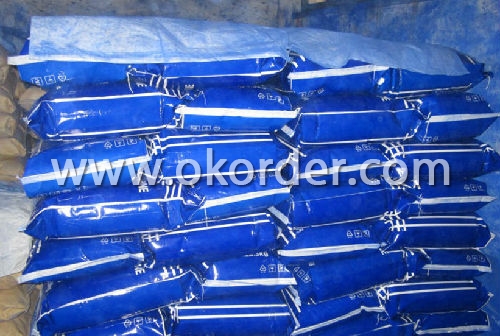


- Q: Please and thank you, it doesn't say so on the website.
- Mac Pigment Ingredients
- Q: pretty self-explanatory...
- Pigments help in making food for the plants they also give color to it.Pigments are of different types which give different color to its leaves or fruits.Like mango is green first and then turns yellow coz green pigment is replaced by yellow pigment. Green pigment in most of the fruits is present only till it requires food and is raw.
- Q: What is the role of pigment in photosynthesis photosynthesis ?
- Photosynthesis can't happen without the pigment chlorophyll (which is green and is why leaves and stuff are green). Chlorophyll is found in chloroplasts, an organelle in plant cells. Chlorophyll harnesses the sunlight's energy in order to split water (into hydrogen pairs and oxygen) so it can be used in the photosynthesis process (ie. in order to make glucose, the food source for plants). Hope this helps! :D
- Q: I hear about it cause my Friend is albino and she was born with no pigments in her hair,skin or eyes
- Melanin is a pigment that is ubiquitous in nature, being found in most organisms (spiders are one of the few groups in which it has not been detected). In animals melanin pigments are derivatives of the amino acid tyrosine. The most common form of biological melanin is eumelanin, a brown-black polymer of dihydroxyindole carboxylic acids, and their reduced forms. All melanins are derivatives of polyacetylene. The most common melanin – dopamelanin – is a mixed copolymer of polyacetylene, polyaniline, and polypyrrole. Another common form of melanin is pheomelanin, a red-brown polymer of benzothiazine units largely responsible for red hair and freckles. The presence of melanin in the archaea and bacteria kingdoms is an issue of ongoing debate among researchers in the field. The increased production of melanin in human skin is called melanogenesis. Production of melanin is stimulated by DNA damage induced by UVB-radiation,[1] and it leads to a delayed development of a tan. This melanogenesis-based tan takes more time to develop, but it is long lasting.[2] The photochemical properties of melanin make it an excellent photoprotectant. It absorbs harmful UV-radiation and transforms the energy into harmless heat through a process called ultrafast internal conversion. This property enables melanin to dissipate more than 99.9% of the absorbed UV radiation as heat[3] (see photoprotection). This prevents the indirect DNA damage that is responsible for the formation of malignant melanoma and other skin cancers. Albinism (from Latin albus, white; see extended etymology, also called achromia, achromasia, or achromatosis) is a congenital disorder characterized by the complete or partial absence of pigment in the skin, hair and eyes due to absence or defect of an enzyme involved in the production of melanin.
- Q: How do you use pigments?
- You can use Pigments for multiple things, eyes, cheeks and lips. -Eyes: With your clean fingers or with a small eyeshadow brush apply the pigment gently to your lids. If its a light color like white, apply it on the inner corner and under the brows. If its darker, like dark brown, apply it on the crease. You can also use it to line your eyes, I like to mix pigments with some moisturizer and with a really thin brush line my eyes. If its a matte pigment (with no shimmer or glitter) you can use it to fill in your brows. Lastly, you can use it on your lashes! I use some hair gel or clear mascara and I mix it with some pigments, I apply it with my finger or with an old mascara wand :) -Cheeks: Use it as a blush if its a pink, red, orange or coral color. Apply a small amount with a blush brush onto the apples of your cheeks. If its a white, very light brown or pink, use it as a highlighter. Apply with a small brush under you undereye area. If its a darker brown, use it as a bronzer or conturing powder. -Lips: Mix pigments with vaseline, olive oil or clear lipbalm to get a tinted gloss. If you want more precision, use a small brush to apply it. As you can see, Its all about the brush you use!! Hope it helped :)
- Q: How are plant pigments like teammates on a sports team? And What is the goal of their teamwork??
- Pigments in the reaction center work together to organize themselves in place, to protect the plant from injury from incidental light, and to absorb photons from the spectrum with each pigment catching its own portion of the incoming wavelengths. The accessory pigments catch and pass energy to chlorophyll a. Chlorophyll a is the specialist that plays the photon's electromagnetic energy into chemical. It splits water to release its electrons and hydrogen ions for use in the calvin cycle where glucose is manufactured. The goal is to fix energy into a usable organic form for the plant to live on.
- Q: I have dyed my hair dark brown for months now it keeps fading because i've had bleach on before hand, so I need some advice on buying decent hair dyes for pre-pigmenting it so my hair dye stops fading out into a horrible gingery brown!
- Pre Pigmenting Will Help Prevent Fading But, You Said Your Hair Had Been Bleached Before. So, You May Need Some DEEP Protien Reconditioning Too. Start By Using A Good Protien Treatment After Every Shampoo. Then, Use A Color Treatment Like ARCtec (Found In Salons And Beauty Supplies) This Will Build-Up The Hair's Pigment Levels. There Are Also Pre-Color Treatments Like L'OREAL Pre-Color Primer, That Will Help Color To Take More Evenly And Last Much Longer. Also, Try MATRIX ForteThérapie Cera-Repair. It Contains Ceramides, Which Are The Glue That Hold Hair And Skin Cells Together. With The Internal Structure And Surface Cells On The Hair (The Cuticle) Reinforced, Your Color WILL Last Longer.
- Q: Can somebody answer this in AP BIO language please
- A pigment molecule absorbs at specific wavelength(s), meaning that when light of a specific wavelength is incident to the molecule only certain wavelengths are absorbed while others are transmitted. The spectrophotometer emits monochromatic light (light of only one wavelength) which passes through the pigment molecule and a detector determines the amount of light that is either absorbed or transmitted by the sample. This is done at wavelengths from the UV (180-330 nm) to the visible (330-700 nm) and the light that is either transmitted or absorbed is detected by the spectrophotometer and is able to be graphed with absorbance representing the y-axis and wavelength representing the x-axis. The resultant graph will depict the absorption spectrum of that particular pigment molecule. Hope that helps.
- Q: How are plant pigments involved in photosynthesis?
- Plant pigments - as other pigments - interact with light to absorb only certain wavelengths. In plants the different sorts of pigments are useful to absorb available wavelengths of light and enable photosynthesis in shadow, in bright sunshine, in deep sea etc.: each pigment reacts with only a narrow range of the spectrum, there is usually a need to produce several kinds of pigments, each of a different color, to capture as much as possible of the sun's energy.
Send your message to us
Pigment Blue 15:1 For Coating
- Loading Port:
- Qingdao Port
- Payment Terms:
- TT or LC
- Min Order Qty:
- 1 Metric Ton m.t.
- Supply Capability:
- 7,500MT/Year m.t./month
OKorder Service Pledge
OKorder Financial Service
Similar products
Hot products
Hot Searches
Related keywords
